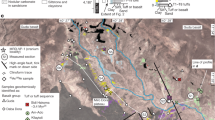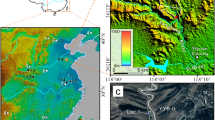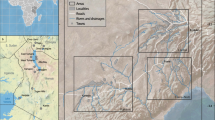Abstract
Mammalian fossils, which include the tooth of an early hominid, have been recovered from the newly mapped Ngorora Formation in the Baringo District. Preliminary dating suggests that this formation is aged between 9 and 12 million years, and the new finds thus help to span a ten million year gap in the fossil mammal record in Africa south of the Sahara.
This is a preview of subscription content, access via your institution
Access options
Subscribe to this journal
Receive 51 print issues and online access
$199.00 per year
only $3.90 per issue
Buy this article
- Purchase on Springer Link
- Instant access to full article PDF
Prices may be subject to local taxes which are calculated during checkout
Similar content being viewed by others
References
Martyn, J., Nature, 215, 476 (1967).
Martyn, J., thesis, Univ. London (1969).
Bishop, W. W., Miller, J. A., and Fitch, F. J., Amer. J. Sci., 267, 669 (1969).
Author information
Authors and Affiliations
Rights and permissions
About this article
Cite this article
BISHOP, W., CHAPMAN, G. Early Pliocene Sediments and Fossils from the Northern Kenya Rift Valley. Nature 226, 914–918 (1970). https://doi.org/10.1038/226914a0
Received:
Issue Date:
DOI: https://doi.org/10.1038/226914a0
This article is cited by
-
A small cichlid species flock from the Upper Miocene (9–10 MYA) of Central Kenya
Hydrobiologia (2021)
-
New haplochromine cichlid from the upper Miocene (9–10 MYA) of Central Kenya
BMC Evolutionary Biology (2020)
-
Rebekkachromis nov. gen. from the middle–upper Miocene (11 MYA) of Central Kenya: the oldest record of a haplotilapiine cichlid fish
Hydrobiologia (2019)
-
Human evolution from the Miocene to the Present
Proceedings: Animal Sciences (1990)
-
Geology and fauna of the middle Miocene hominoid site at Muruyur, Baringo district, Kenya
Human Evolution (1988)
Comments
By submitting a comment you agree to abide by our Terms and Community Guidelines. If you find something abusive or that does not comply with our terms or guidelines please flag it as inappropriate.



